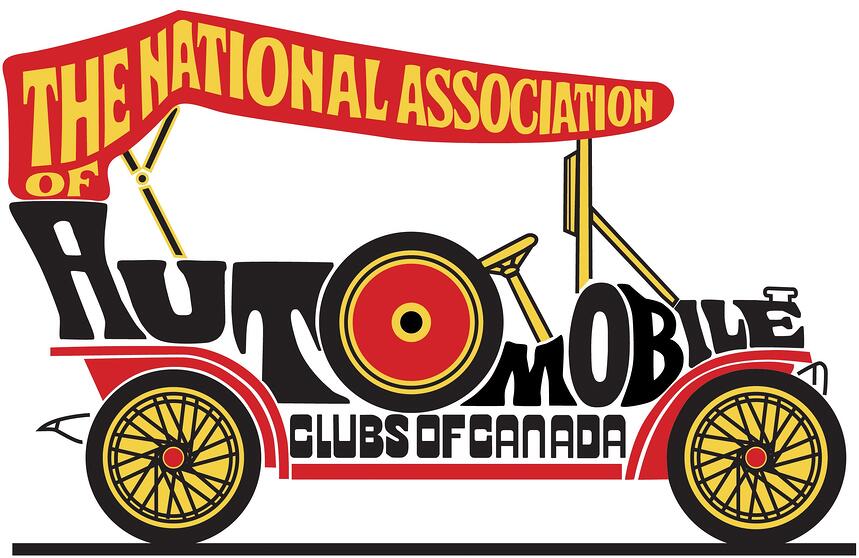Jim Deist grew up in the hotbed of hot-rodding in southern California (Glendale). In 1939, Jim’s dad built a gas station and it was here in the back room that Jim first learned about assembling engines and building his first car.
His racing involvement began while still in high school when he made his first trip to Muroc dry lake to help his buddy, Al Miller run his modified 4 banger powered Model A. After graduating from high school, Jim went to work learning to be a fabricator but he really didn’t like this work so he then tried the construction business. In 1948 he went to work at Irving Air Chute where he learned the parachute manufacturing business while continuing to pursue his racing hobby.
In 1956 Jim was introduced to Abe Carson who was running a dragster and was having trouble stopping it at the end of each run and wondered if a chute might help. The Irving Air Chute folks weren’t interested in Abe’s project but didn’t object to Jim making up one on his own time to test. Jim’s first attempt with the chute was less than a success when it got all tangled-up on the push bar but subsequent trial and error testing soon proved the chute would work. Carson continued to use the chute on his dragster, which he ran mostly at San Fernando Raceway. It wasn’t until one Sunday when Mickey Thompson was there as a spectator and saw Carson using the chute that things started to happen. Mickey invited Carson and the “guy that made the chute”, Jim Deist, to Long Beach to explore its use further. It was Mickey who encouraged Jim to start making these Drag Chutes” commercially. Soon Jim installed a chute on Ed Pink’s dragster with Tom Dyer driving followed quickly by Art Chrisman. With more and more drivers wanting chutes for their cars, Jim founded Deist Safety in 1958 to fill their needs.
Next came chutes for use at Bonneville when Mickey built the Challenger which he hoped would run over 400 mph. He was quite sure the car could attain this speed but he was concerned about stopping it. Again by trial and error, Deist was able to build chutes that were the correct size, had the right length towline and mounted properly that enabled Mickey to continue going faster and faster, safely. Soon chutes began appearing on other cars, from streamliners to roadsters, saving countless drivers serious injury.
Always with an eye on driver safety, Jim soon added custom made seat belts to his line to replace the surplus ones being used at that time. With the parachutes working smoothly and seat belts going out the door, Jim realized that the leather jacket and shorty face mask being used by most of the drivers didn’t offer much protection against fire so he went to work producing a safer fire suit. His first try in 1961 was pretty crude but with some modifying it worked very well. Tom Dyer was wearing his first “production model” at Bakersfield when he had a horrendous fire. The car took a beating but Tom came out safely. Since its beginning, Deist Safety has produced safety equipment for all forms of racing, the movie industry and other specialty arenas.
Although no longer with us, Jim has received numerous honors because of his contributions to racing safety including; Most Valuable Man of the Year at Bonneville in 1981, the 200 MPH Club’s Man of the Year in 1982, inducted into the Dry Lakes Racing Hall of Fame in 1995 and a Reunion Honoree at the 1997 NHRA Hot Rod Reunion.

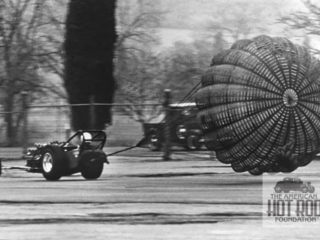

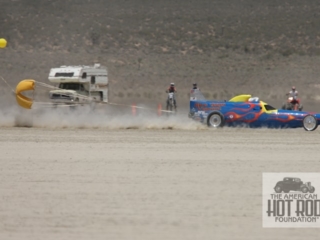

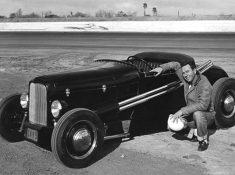 Jack Calori
Jack Calori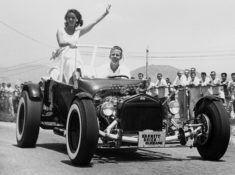 Tommy Ivo
Tommy Ivo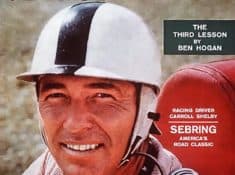 Carroll Shelby
Carroll Shelby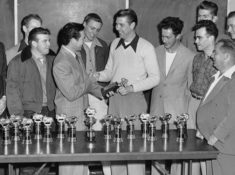 Alex Xydias
Alex Xydias

